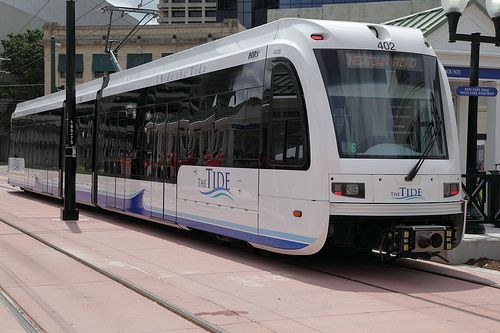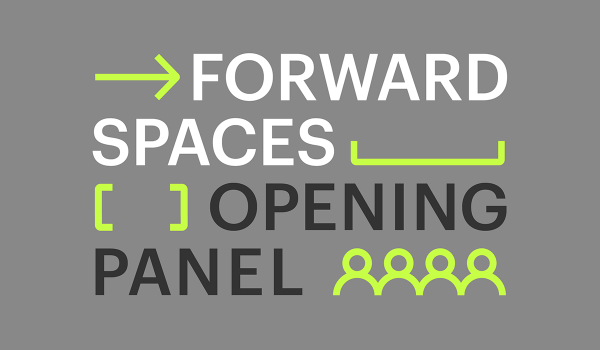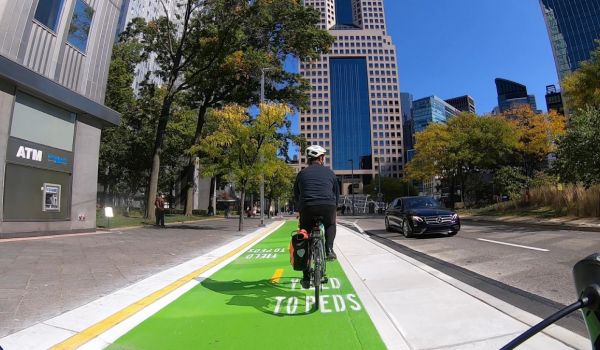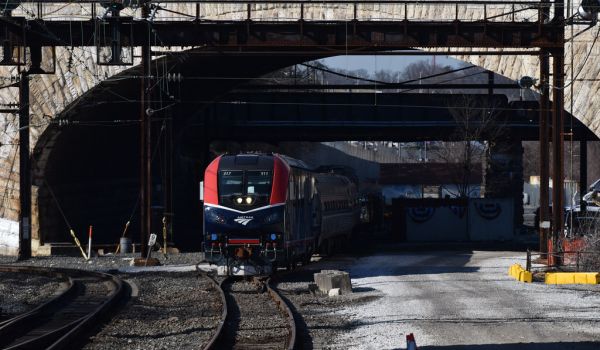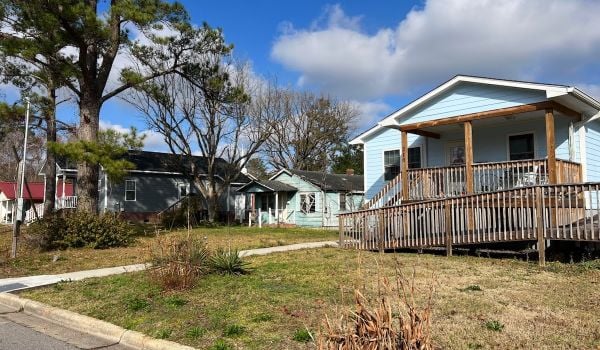This piece originally appeared on Greater Greater Washington.
Just six months after opening, Virginia’s first light rail transit system, located in Norfolk, is already exceeding ridership expectations. Now it’s time for the Commonwealth’s largest city, Virginia Beach, to hop aboard and extend the light rail all the way to the Atlantic oceanfront.
Dubbed “The Tide,” South Hampton Roads’ light rail system made its debut in Norfolk on August 19, 2011. The initial $338 million segment, operated by the regional transit agency, Hampton Roads Transit (HRT), is 7.4 miles, has 11 stops and is currently located only within Norfolk’s city limits.
The system connects Norfolk State University, the downtown central business district, Harbor Park (a minor league baseball stadium) and the region’s premier medical center complex, including Eastern Virginia Medical School, Sentara Norfolk General Hospital and the Children’s Hospital of the King’s Daughters.
I had the opportunity to experience the Tide’s inaugural weekend while visiting my parents in my hometown of Virginia Beach. We were among the over 75,000 people who boarded the trains during the first three days, when HRT was running a free promotion to introduce the community to the new light rail system.
Initial weekday ridership during the first year was projected to be only 2,900. However, the six-month data shows that those early projections have been blown away. About 4,642 people ride The Tide during an average weekday. An even higher number—4,850—use the system on Saturdays, with 2,099 usually riding on Sundays.
Virginia Beach wary of light rail, but preserving its options
Originally, HRT had planned for The Tide to extend from downtown Norfolk all the way to the Virginia Beach oceanfront, along an abandoned Norfolk-Southern rail right-of-way. However, the transit agency needed the consent of both cities to move forward, and Beach residents voted down the proposal in 1999. Therefore, Norfolk proceeded on its own.
In recent years, however, the resort city has signaled that it may be warming up to the idea of light rail. For example, Virginia Beach’s 2009 Comprehensive Plan adopted a new urban growth strategy that is designed to direct the majority of the city’s future growth to eight defined “strategic growth areas” (SGAs). Six of these SGAs are located along the city’s portion of the abandoned Norfolk-Southern right-of-way currently used by The Tide in Norfolk. The comprehensive plan even gives a positive mention to light rail as an “alternative transportation” option.
In 2010, Virginia Beach contributed the $15 million in matching funds necessary to purchase the 10.6-mile stretch of Norfolk-Southern right-of-way which runs from the city’s Newtown Road border with Norfolk to Birdneck Road in Virginia Beach—approximately a mile from the oceanfront. Additional right-of-way will need to be acquired to extend the existing rail lines to the city’s convention center and ultimately to the resort area near the oceanfront.
Tide promises a “tsunami” of smart growth possibilities for region
For The Tide to become the truly regional transit system it was intended to be, it must extend to the Virginia Beach oceanfront. The resort city’s portion of the abandoned Norfolk-Southern railway corridor has already been identified in the Hampton Roads Regional Transit Vision Plan as a priority rapid transit extension corridor.
HRT has begun a federally required transit extension study/alternatives analysis to determine what mode of rapid transit, if any, is appropriate for the corridor. The four alternatives being considered are (1) doing nothing; (2) enhancing local bus service; (3) building a bus rapid transit (BRT) line; and (4) extending The Tide’s light rail line.
According to the study, an extension of The Tide light rail system to the Virginia Beach oceanfront would bring approximately 1.1 million square feet of residential and commercial development within a quarter-mile of the corridor, or 90,000 square feet per corridor mile—the highest and most dense level of transit-oriented development predicted in the region. Those development projections double when taking into consideration the whole half-mile transportation analysis zone (2.3 million SF/191,000 SF per corridor mile).
The study anticipates that the Beach extension of The Tide would have eight stations, all of which lie within the city’s 2009 Comprehensive Plan-designated strategic growth areas.
After being inspired by my inaugural Tide ride in Norfolk, and prior to looking at any planning documents, I decided to create my own map of potential Virginia Beach light rail stations. Based solely on my knowledge of the area from growing up there, I was able to identify all eight of the stations that HRT recommended in its study, plus a ninth one (at North Plaza Trail). Here’s my map:
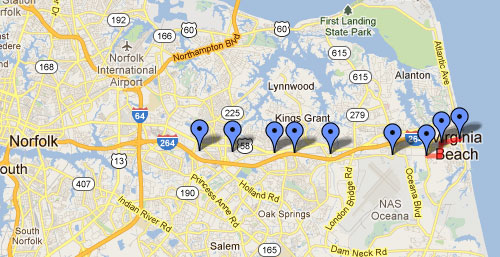
In April 2011, HRT suspended the Virginia Beach Transit Extension Study until it could get 9-12 months of actual ridership data from The Tide’s initial Norfolk segment. Having now obtained six of those 9-12 months of data, HRT should have no problem concluding that regional ridership will support the extension of light rail to the Beach.
Particularly in light of Amtrak’s recent announcement that its popular Northeast Regional trains will directly service Norfolk’s Harbor Park by the end of 2012, it makes even more sense to extend The Tide to Virginia Beach. That way, tourists and business travelers from as far north as Boston could seamlessly travel to most of the region’s prime destinations without ever having to rent a car.
To paraphrase (in a shamelessly corny way) an early 1980s Blondie hit, “The Tide is High”—in Norfolk. Virginia Beach needs to catch the wave and extend the region’s light rail system to the oceanfront as soon as possible.

